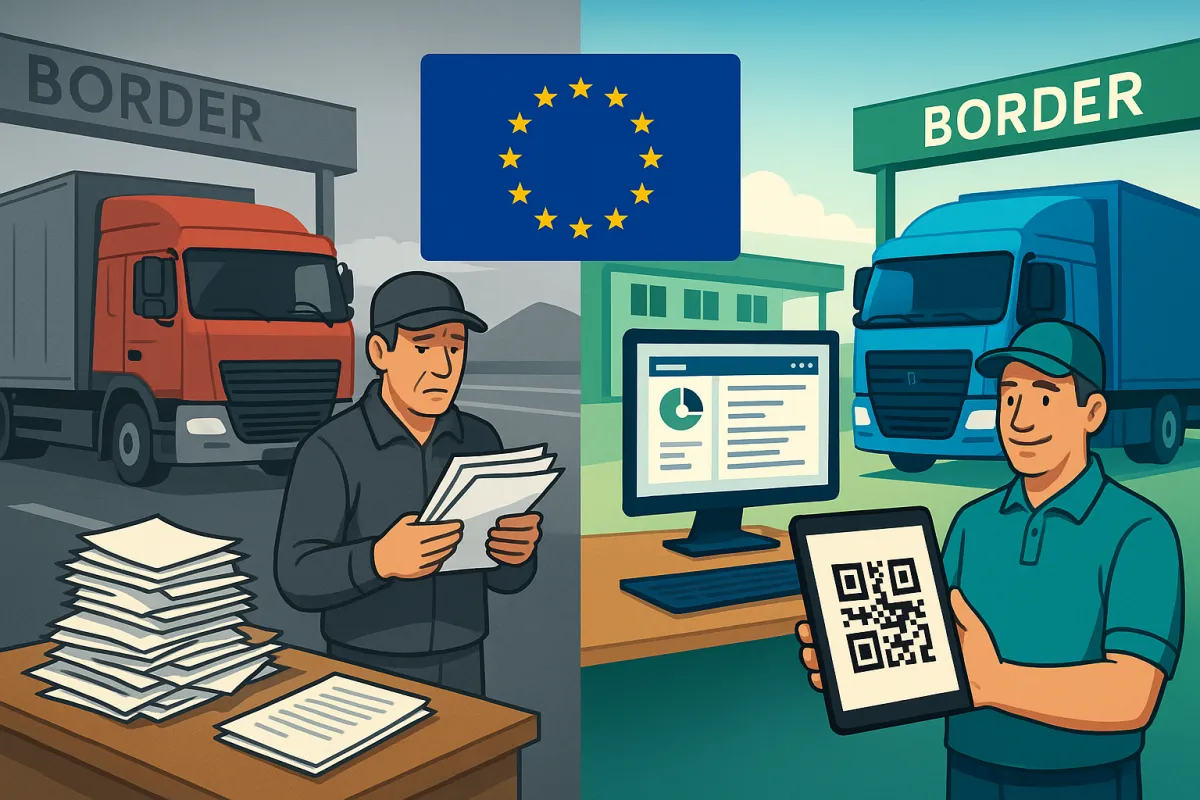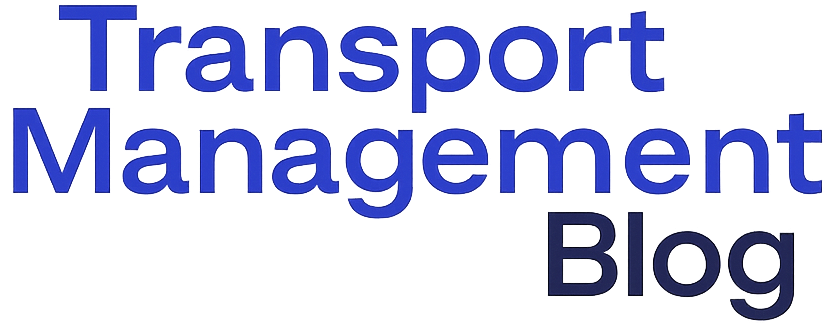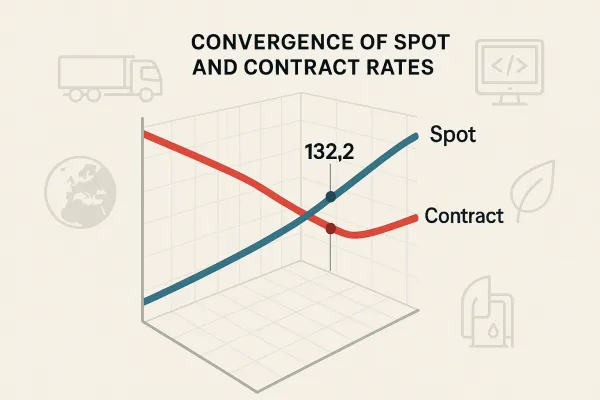eFTI Regulation 2025: Your Complete Guide to Compliance and TMS Integration for European Shippers

The eFTI Regulation implementation timeline just got real. As of January 2025, Member States may start developing the IT systems necessary to allow authorities to check eFTI compliant transport information. For European shippers managing significant transport spend, this shift from paper-based processes to electronic freight transport information represents both compliance necessity and competitive opportunity.
The regulation affects road, rail, inland waterway, and air transport, meaning your entire multimodal network needs preparation. As of 9 July 2027, the eFTI Regulation will apply in full, giving you roughly two and a half years to get ready. Here's your complete roadmap for eFTI compliance while upgrading your transport management capabilities.
Understanding the eFTI Regulation: What Changes in 2025
The regulation mandates that authorities in all EU Member States will be required to accept electronic data when shared by businesses via eFTI-compliant platforms. Your freight documents - CMRs, customs declarations, dangerous goods documentation - must be available electronically through certified platforms.
The implementation follows a phased approach. By September 2025, the Commission plans to adopt the remaining eFTI implementing specifications, providing detailed technical requirements. As of January 2026, eFTI platforms and service providers can start preparing for operations, with Member States authorities potentially starting to accept data stored on certified eFTI platforms for inspection.
Technical requirements include unique access links in machine-readable formats such as QR codes. During inspections, authorities will scan these codes to retrieve information from your certified system. Business data will be housed on secure, certified IT platforms that can be easily integrated with companies' existing data management systems.
Leading TMS providers like MercuryGate, Descartes, and Cargoson are already preparing eFTI-compatible solutions. The key is choosing platforms that combine regulatory compliance with transport optimization capabilities.
The Business Case: Why eFTI Compliance Matters Beyond Regulations
The numbers tell the story. The introduction of Electronic Freight Transport Information could save the EU transport and logistics sector up to €1 billion per year. Over 20 years, EUR 27 billion could be saved in the next 20 years.
Real operational benefits emerge from electronic documentation. Paper-based processes create delays at border crossings, increase administrative overhead, and generate compliance risks. This process is often paper-based, time-consuming and error-prone, leading to delays, a high administrative burden and unnecessary costs.
Early adopters already demonstrate measurable results. Modern Transportation realised USD 5 million annual savings after adopting BeyondTrucks multi-tenant TMS. These savings come from reduced document handling, faster customs clearance, and improved carrier performance management.
Solutions like Cargoson, nShift, and Alpega position themselves to capture these efficiency gains while ensuring compliance. Companies that prepare for eFTI at an early stage will benefit from significant competitive advantages.
Current State Analysis: Where Most European Shippers Stand Today
Most European shippers face fragmented digital capabilities. Document acceptance varies unpredictably across countries and authorities. Some accept electronic CMRs, others demand paper backups, creating operational complexity for cross-border movements.
Integration challenges compound the problem. To own a holistic TMS requires a long and expensive integration and customization process which makes TMSs not affordable by SMEs who generally lack resources for it. Many companies operate with disconnected systems - ERP for ordering, WMS for warehousing, separate carrier portals for booking, and manual processes for documentation.
The regulatory landscape adds pressure. This digital shift will reduce administrative burdens for operators and authorities, enhance data security, and ensure compliance with EU and national freight regulations. Companies still relying on paper processes face increasing compliance costs and operational friction.
Major players like Oracle TM, SAP TM, and Blue Yonder offer enterprise-grade solutions, but implementation complexity often delays projects. Mid-market alternatives including Cargoson focus on faster deployment with eFTI readiness built-in.
Step-by-Step eFTI Compliance Roadmap
Phase 1: System Assessment and Development Planning (Now-2025)
Start with a comprehensive audit of current document workflows. Map every freight document type, identify electronic alternatives, and assess your current TMS capabilities. Evaluate whether your existing platform can support eFTI requirements or requires replacement.
Select your technology approach. Cloud-based TMS solutions have become more popular because they are inexpensive to start, easy to set up, and require less hardware. This matches eFTI platform requirements for secure, scalable access.
Phase 2: IT System Development and Testing (2025-2026)
By September 2025, the Commission plans to adopt the remaining eFTI implementing specifications, providing detailed certification requirements. Begin system integration and testing with your chosen eFTI-compatible TMS during this period.
Operators choosing to go digital will have to comply with established regulations, using certified platforms and/or service providers. Ensure your selected solution includes conformity assessment body certification processes.
Phase 3: Full Implementation and Authority Readiness (2026-2027)
Member States authorities may start accepting data stored on certified eFTI platforms for inspection from January 2026. Use this voluntary period for real-world testing and staff training.
QR code generation and machine-readable format requirements become mandatory by July 2027. Your TMS must generate these automatically for every shipment across all transport modes.
Choosing the Right eFTI-Compatible TMS
Platform selection determines your compliance success and operational efficiency. Business data will be housed on secure, certified IT platforms that can be easily integrated with companies' existing data management systems.
Cloud-based solutions offer distinct advantages. Cloud-based solutions are often cheaper and more profitable for organizations that do not have the technical resources to build their own infrastructure, proven to be a more cost-effective option than on-premise deployment mainly because the licensing and data storage system costs are lower, and the technical labor is less.
Evaluate integration capabilities with your ERP and WMS systems. High interoperability ensures that the eFTI platform is compatible with existing ERP and TMS systems, with implementation taking place via digital interfaces that are integrated into existing ERP and transport management systems.
Consider providers like Transporeon, Manhattan Active, and Cargoson that specifically address European compliance requirements. Look for existing carrier connectivity - TMS solutions enable businesses to streamline freight management, route optimization, carrier selection, shipment tracking, and cost management across diverse transportation modes.
Integration Strategies and Best Practices
Modern configurable solutions reduce traditional integration complexity. TMS integrates seamlessly with other supply chain technologies like Warehouse Management Systems (WMS) and Enterprise Resource Planning (ERP) solutions, creating a holistic view of logistics operations.
Electronic data sharing becomes standardized. Data will be shared electronically between shippers, freight forwarders and carriers, who can modify it as needed, as it is in the paper-based processes. Your TMS needs to support this multi-party collaboration while maintaining data security.
Change management requires careful planning. Staff accustomed to paper processes need training on digital workflows. Some companies are reluctant to shift from manual practices to the digitalized process involving high capital re-investment. Many enterprises are skeptical about the use of new digital technologies.
Solutions like Cargoson, FreightPOP, and 3Gtms offer implementation support and training programs to accelerate adoption. Focus on demonstrating immediate benefits - faster document processing, reduced errors, improved visibility - to build user acceptance.
Cost-Benefit Analysis and ROI Expectations
Implementation costs include software licensing, system integration, and staff training. The acceleration stems from enterprises replacing capital-heavy on-premises tools with scalable cloud platforms that deliver rapid deployment, lower total cost of ownership, and real-time operational visibility.
The significant return on investment provided using transportation management systems (TMS) are projected to be the primary drivers of industry expansion. Specific ROI drivers include freight cost reduction through better procurement and routing, reduced administrative overhead, and improved compliance management.
Cloud-based solutions show faster payback periods. Cloud-based TMS solutions dominate the market, holding over 60% of the total share due to their scalability and real-time capabilities. Lower upfront costs and predictable monthly fees improve cash flow compared to traditional on-premise deployments.
SMEs particularly benefit from eFTI compliance. The transport and logistics sector is expected to save EUR 27 billion over the next 20 years, with cost-effective solutions like Cargoson, Shiptify, and Uber Freight making advanced capabilities accessible to mid-market shippers.
Looking Ahead: eFTI and the Future of European Transport Management
The eFTI framework may expand beyond freight documentation. The eFTI exchange environment may expand to cover compliance with rules related to drivers or vehicles, potentially integrating with other systems for a comprehensive authority interface. This suggests future integration with driver hours regulations, vehicle inspection requirements, and emissions compliance.
AI and machine learning integration accelerates. Rose Rocket unveiled TMS.ai at the Manifest 2025 conference, marking a significant evolution in transportation management systems, placing artificial intelligence at the core of the business's system-of-record. Predictive analytics for route optimization, demand forecasting, and carrier performance management become standard capabilities.
Smooth collaboration among supply chain actors leads to unprecedented supply chain transparency, real-time management of traffic and cargo flows, and a significant decrease in administrative burdens. The transport sector stands to gain immensely from more effective use of infrastructure, lower expenses and increased efficiency.
The competitive landscape will favor early adopters. Companies implementing eFTI-compatible systems now gain operational advantages while competitors struggle with compliance deadlines. Solutions from providers like Cargoson, nShift, Descartes, and emerging technologies position forward-thinking shippers for sustained competitive advantage.
Start your eFTI preparation now. Assess your current capabilities, evaluate TMS options, and begin integration planning. The July 2027 deadline approaches faster than you think, and the benefits of early implementation extend far beyond regulatory compliance.





